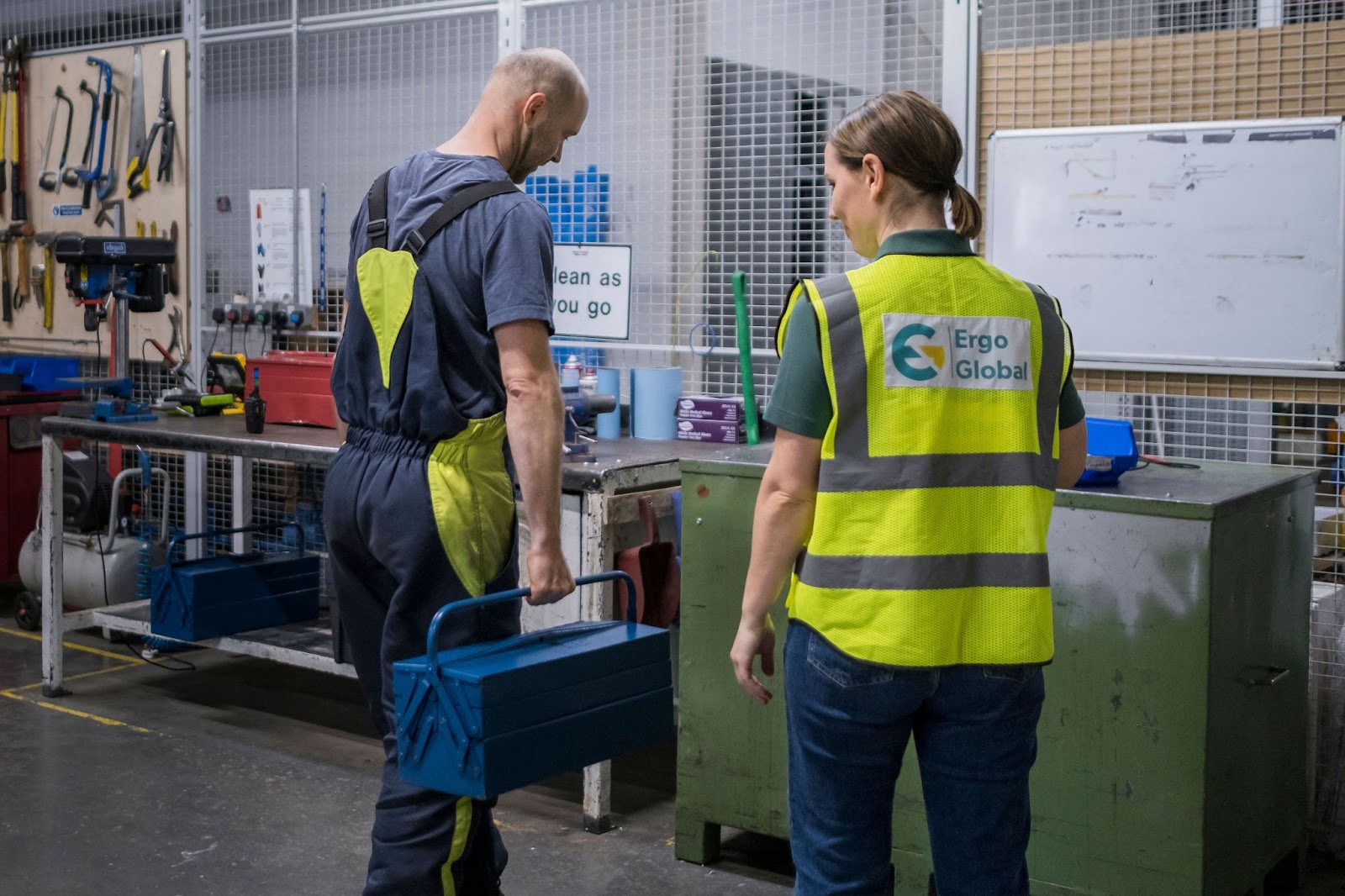Ergonomics is all about designing a workplace that works for the people in it—reducing injuries, boosting productivity, and improving overall well-being. Instead of forcing workers to adapt to uncomfortable conditions, ergonomic principles tailor workspaces to match human needs. This applies to everything from desk height in an office to tool positioning on a factory floor.
By applying these principles, businesses can significantly lower the risk of musculoskeletal disorders (MSDs), such as back pain, carpal tunnel syndrome, and repetitive strain injuries. Proper ergonomics doesn’t just help individuals—it leads to greater efficiency, lower healthcare costs, and higher employee satisfaction.
So, what are the core principles of ergonomics? From maintaining neutral postures to reducing excessive motion, let’s explore the key strategies that can transform your work environment.
The Science Behind the Principles of Ergonomics
Ergonomics is a science-backed approach to designing workplaces that fit the worker. It draws from multiple disciplines, including physiology, biomechanics, and psychology, to create environments that enhance comfort, efficiency, and safety:
| BiomechanicsThis field examines how the body moves and responds to forces. Ergonomic designs minimize stress on joints and muscles by promoting natural postures and reducing excessive exertion. | AnthropometryBy studying human body measurements, ergonomics ensures tools and workstations accommodate diverse sizes and shapes, from adjustable chairs to modular desks. |
| PhysiologyUnderstanding how the body functions under various conditions—like temperature or noise—helps create supportive environments. | Cognitive PsychologyThis aspect focuses on mental workload, designing intuitive systems that reduce errors and stress. |

Together, these sciences inform a human-centered design philosophy. For example, OSHA notes that MSDs account for 30-40% of workplace injuries, often due to awkward postures or repetitive tasks. Ergonomics counters this by aligning tasks with human capabilities, preventing strain before it starts.
The Core Principles of Ergonomics
The idea behind ergonomics is simple: design the workplace to fit the worker, not the other way around. But how does this work in practice? It all comes down to a set of science-backed strategies that help people work more comfortably, safely, and efficiently.
Let’s break down these principles:
5 Principles of Ergonomics in Office Settings

The idea behind ergonomic office setups is pretty simple: shape your workspace around you so you don’t end up feeling like a pretzel at the end of the day.
Work in Neutral Postures
Your spine likes a relaxed, upright angle. Many back issues stem from twisting awkwardly or slouching day after day. Position your chair so your feet reach the floor, thighs run parallel to the ground, and elbows land near 90 degrees while typing. Keep the top of your monitor around eye level. This posture keeps your neck from craning and your wrists from bending at strange angles.
Keep Everything in Reach
A setup that requires endless arm-stretching isn’t great. Place your keyboard, mouse, and key documents where you can grab them with minimal movement. Constant overreaching can trigger shoulder and neck tension. A phone placed too far off might have you half-standing every time it rings. A little rearranging goes a long way in trimming wasted motion.
Work at the Proper Height
A cramped posture invites fatigue and soreness. Desks or tables that are too high force your shoulders up, leading to tension headaches. Surfaces set too low can make you hunch forward. An adjustable chair helps fine-tune positioning. If your wrists are angling up or down, get a wrist pad or raise the keyboard slightly. Small adjustments keep your body in a comfy zone.
Minimize Pressure Points
Hard chair edges dig into thighs, and sharp desk corners irritate forearms. Over time, this leads to numbness or soreness. Ergonomic cushions, padded armrests, and wrist supports distribute pressure more evenly. Proper circulation means muscles stay relaxed, and you won’t fidget around, desperate to relieve discomfort every few minutes.
Maintain a Comfortable Environment
Office ergonomics isn’t just about physical posture. Temperature, lighting, and air quality can affect how you feel. Glare on your screen causes eye strain, and a room that’s too warm saps energy. Clean air reduces headaches and keeps you alert. Some people add desk lamps or block out overhead fluorescent lights to avoid harsh glare. These tweaks help you work better without constant distractions.
5 Principles of Ergonomics in Industrial Settings

Working in a warehouse or factory isn’t about adjusting your chair—it’s about setting up your entire space to protect you while you’re on the move.
Reduce Excessive Force
Overexertion happens when workers lift heavy boxes without mechanical aids, grip power tools too tightly, or push heavy machinery. Musculoskeletal injuries often start here. Using hoists, dollies, or even team lifts spreads the load. Lighter tools with better grips also help. There’s no point battling equipment that’s not designed for humans.
Reduce Excessive Motions
Repeating the same move—pulling levers or sorting parts—over thousands of cycles leads to strain. Rotating tasks and mixing up movements give muscles a break. Consider automation for the most repetitive or high-risk jobs. A quick pause every hour to shake out your hands or shift your stance can prevent nagging aches.
Minimize Fatigue and Static Load
Standing in one spot for hours or bracing your arms overhead is exhausting. Muscles lock up and circulation suffers when you stay stiff for too long. Frequent mini-breaks plus job rotation help. Adjustable fixtures, like platforms that raise or lower work to waist height, spare your body. Spreading tasks among a team lightens the load and keeps people fresh.
Provide Clearance
A cramped warehouse is an accident waiting to happen. Narrow aisles or cluttered floors slow down work and force people into awkward maneuvers. Organizing inventory so items don’t pile up on the ground cuts tripping hazards. Wide, obstacle-free paths also make it easier to use forklift trucks or pallet jacks without risking collisions.
Move, Exercise, and Stretch
Physical jobs still need active breaks. Staying in motion keeps circulation going, reducing stiffness in joints and muscles. Short stretch sessions loosen up tight spots, whether it’s rolling shoulders or flexing wrists. Some workplaces do group warm-ups at shift start. That keeps morale high and heads off injuries linked to cold, unprepared muscles.
Partner with Ergo Global to Transform Your Workplace

Understanding the principle of ergonomics is just the first step—applying it effectively requires expert guidance. Ergo Global specializes in turning ergonomic theory into practical solutions tailored to your unique workplace needs. Our team assesses your environment, identifies hidden risks, and implements smart, sustainable changes that dramatically improve health, safety, and productivity.
Ready to see how ergonomics can revolutionize your business? Connect with Ergo Global today and start creating a safer, healthier, and more efficient workspace.

